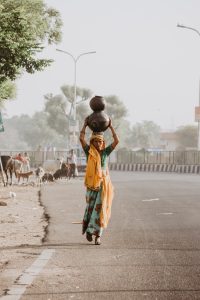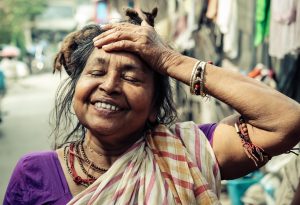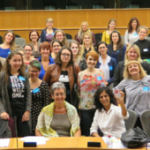Mulk Raj Anand’s Untouchable portrayed the issue of caste, but has somehow overlooked the intersectionality of oppression that survives in India along with caste. Hence, this review attempts to decipher the issue of gender as an entity as well as a concept in association with performance.
Mulk Raj Anand was famous for his literary depiction of class and caste in his writings. He gained popularity for his protest novel Untouchable. This novel, published in 1935, depicts how archaic and superstitious beliefs impact the lives of Indians and how these thoughts allow one community to gain power and authoritarionship; while pushing others to the margins where they are oppressed. Amidst the inexhaustible network of previous reviews, mine brings attention to the absence of women and queer identities as ‘subjects’ of the text, because I believe these identities could have brought a more vivid depiction of the subtle and intersectional marginalization within India.
The story of Bakha
India is built on the Brahmanical standard of identification, Brahman is a religious or social system based on the rituals and beliefs of Hindu priestly society. Within this cultural structure, caste as an issue is highly important to address. The novel narrates an ordinary day of a Dalit boy named Bakha. Dalit is a term for people in the lowest social group in the caste system, they are also known as “Untouchables”. Bakha spends his day thinking and hoping for a change in others’ perception of people whose occupation is to clean latrines.
“The issue of caste through the body of a man has gained significant attention and acknowledgment; however women and historically marginalized groups are still often presented as the Other.”
Anand narrates what Bakha and his family have to endure on a regular basis, how he visualizes his sister Sohini and how society does so, as well as some of Bakha’s happy childhood memories. The book ends when the day turns into night and Bakha goes to listen to a speech by Mahatma Gandhi. In his speech, Gandhi refers to Untouchables as Harijans (people close to god), and how soon the western latrines will solve the issue of latrine cleaners thus giving Bakha some hope.
Analyzing the Intersection of Caste-Class & Gender
For my review of the book it is crucial to comprehend how people are subjected to multiple levels of oppression and how the experiences intersect with each other, which is something Untouchable partially sheds light on. Kimberlé Crenshaw stated in an interview with TIME that intersectionality is “[…] basically a lens, a prism, for seeing how various forms of inequality often operate together and exacerbate each other. We tend to talk about race inequality as separate from inequality based on gender, class, sexuality, or immigrant status. What’s often missing is how some people are subject to all of these, and the experience is not just the sum of its parts.”
This book mainly sheds light on the ingrained and marginalizing caste system perpetuated in India. The issue of caste through the body of a man has gained significant attention and acknowledgment; however women and historically marginalized groups are still often presented as the Other. For example, what if Sohini had been the ‘subject’ of the book? Had that been the case, the intersection of class and caste with gender would have exacerbated the depicted suffering. Women as “the second sex” are pushed to the margins in a phallogocentric world and being a Dalit from a poor class creates another layer of oppression.
The issues of queer people are also left untouched, for Anand did not mention any identity that deviated from the heteronormative diction. I think that the journey of a transgender man who is Dalit and bisexual would not have been the same as Bakha’s, for Bakha conforms to heteronormativity. He is a cis-heterosexual masculine body and doesn’t deviate from the notions of hegemonic masculinity and heterosexuality. Had he deviated from these norms, all these forms of inequality – caste, class, gender and sexuality – would have operated together and exacerbated each other.
Gender: a marked absence
Caste is a part of many intersecting identities and should thus be approached with an intersectional lens. For instance, caste is a creation churned from the class system. As Ambedkar for example explains, the cycle of poverty – where people working low income jobs often receive(d) fewer or no opportunities – created a belief and political system wherein certain communities should serve others. Because of this, class and caste can’t be treated as separate entities.
“Politicizing the oppression of women was completely untouched by this book, for Sohini functioned as an absence.”
Two of these intersections are addressed in the book. Bakha is shunned because people know him as a ‘latrine cleaner’, someone who belongs to the “impure” category. It was the class system that previously segregated professions into ‘pure’ and ‘impure’ as well as turning it into an inheritational system. This limited people to which work they could do. These two systems are also further compounded by the binarized gender structure which restricts fluidity of gender experience and performance. In the book however, an analysis of Gender is missing. Had the book collected information or experiences from a wider group of people, it would have depicted the intersecting oppressions perpetuated in India differently.
Untouchable and Unrepresentable
The book largely deals with the political representation of caste and its discourse within cultural echoes of identity and body politics. However, what I found was crucially absent, or maybe it was a deliberate technique to draw the attention of the readers to it, was the intersection of gender. With this review, I want to draw attention to the marked absence of women.
Sohini is described with words such as fragile, beauty, textured, breasts, thin, slim, delicate, etc.. These words draw to the bodily features of a woman’s body, emphasizing the ‘physical’ aspect. Following Simone De Beauvoir’s famous rhetoric in her work The Second Sex, wherein she explains the binarized association of men with the mind and the universal and women are with the opposite, Sohini’s description creates a binary between her mind and her body. Her body is presented as an object of lust. For example, her breasts are things to be occupied by her husband, and she is not permitted to (re)claim any space or voice when a priest grabs her.
These examples implicitly demonstrate how gender power dynamics operate within the caste system, where women can suffer intersecting forms of oppression. As Judith Butler wrote: “Women are the sex which is not ‘one’. Within…a phallogocentric language, women constitute the unrepresentable…women represent the sex that cannot be thought, a linguistic absence and opacity.” Sohini’s presence was only in association with men like her brother.







Average Rating